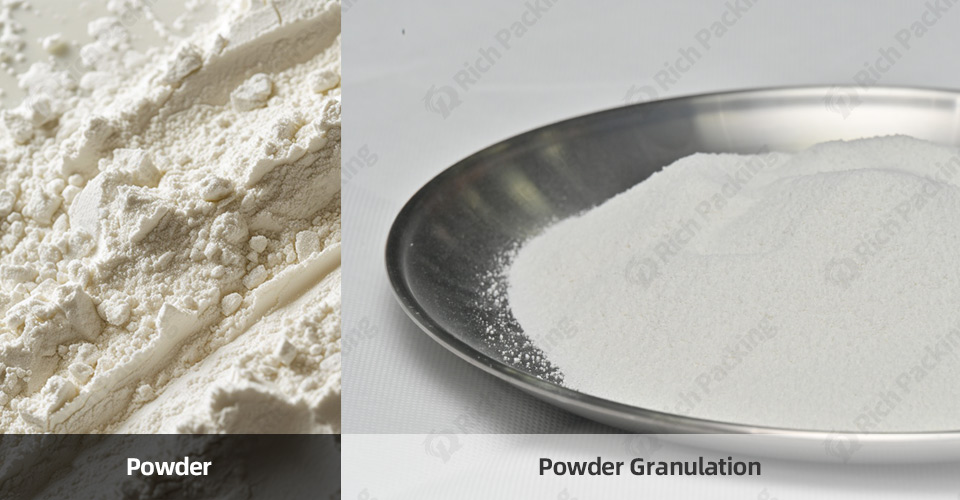Categories
New Blog
Tags
In pharmaceutical manufacturing, dust generation during tablet compression is a persistent challenge that can significantly impact your product quality, operator safety, and manufacturing efficiency. Understanding and controlling dust in your rotary tablet press is crucial for maintaining optimal production conditions and meeting regulatory requirements. This comprehensive guide will help you understand the primary causes of dust generation and provide practical solutions for minimizing its occurrence.

Before addressing specific causes, you need to understand how dust is generated in your tablet press. During the compression process, powder particles become airborne at various stages, from initial feeding to final tablet ejection. This phenomenon occurs due to mechanical forces, air displacement, and material properties interacting within the compression system. The presence of dust in your tablet press leads to reduced product yield, material wastage, cross-contamination risks, potential health hazards for operators, decreased machine performance, and significant cleaning and maintenance challenges.
Your tablet formulation plays a fundamental role in dust generation. When your formulation contains a high percentage of fine particles, particularly those below 50 microns, they are more likely to become airborne during processing. The moisture content of your granulation also significantly impacts dust generation – typically, the optimal moisture content ranges from 1.5% to 3%, depending on your specific formulation. Too little moisture can make particles more prone to breaking apart and generating dust.
Flow properties of your powder blend directly affect dust generation through their impact on feed frame filling and powder movement. Poor flow can cause irregular filling and increased turbulence, leading to excess dust. These properties are influenced by particle shape and size uniformity, surface roughness, electrostatic charges, and cohesiveness between particles. To optimize your formulation for minimal dust generation, consider adjusting particle size distribution through proper milling and granulation, implementing moisture content controls, and using appropriate binders and flow aids.

Your tablet press's mechanical components and operational settings significantly influence dust generation. The feed frame is often the primary source of dust, with issues stemming from excessive paddle speed, improper clearance between paddles and housing, worn components, or inadequate powder bed height. Your compression settings also play a crucial role – too high compression speed can cause increased air displacement, while insufficient pre-compression force may lead to powder displacement and excessive main compression force can cause lamination and dust.
The condition and configuration of your die table components directly affect dust generation. Worn die bores can cause powder leakage, while improper die-to-punch clearance or rough punch surfaces can contribute to excess dust. To minimize these issues, maintain regular inspection and replacement schedules for worn punches and dies, ensure proper tooling maintenance and polishing, and regularly calibrate your force monitors.

The environment around your tablet press significantly impacts dust generation and control. Proper air flow management is essential – excessive air currents from nearby HVAC systems or inadequate dust collection system design can exacerbate dust problems. Temperature and humidity in your compression room affect powder behavior, with low humidity increasing static electricity and temperature fluctuations affecting powder properties.
To effectively manage environmental factors, install and maintain properly designed dust extraction systems, control room temperature and humidity, and maintain appropriate room pressurization. Regular cleaning and housekeeping procedures are essential for maintaining a dust-controlled environment. Your dust collection system should be regularly maintained, with filters and ducting checked and cleaned according to a predetermined schedule.
To minimize dust generation in your tablet press, implement comprehensive preventive measures focusing on both equipment and operational aspects. Regularly optimize your feed frame settings by adjusting paddle speed based on formulation properties and maintaining proper clearances. Install dust containment shields where appropriate and ensure all compression tools are properly maintained and replaced when worn.
Your operating procedures should include optimal speed and force controls, with proper attention to turret speed optimization for each formulation and appropriate pre-compression force settings. Implement closed transfer systems for material handling and maintain consistent powder bed height during operation. These measures, combined with proper environmental controls, will significantly reduce dust generation in your tablet press operations.
Establish a comprehensive monitoring program to track dust generation and its contributing factors. Regular measurements of particle concentration, environmental parameters, and compression forces provide valuable data for optimization. Track product yield, cleaning frequency, and maintenance requirements to identify trends and potential areas for improvement.
Ensure your operators are properly trained in machine operation procedures, recognition of dust-related issues, and appropriate response to abnormal conditions. Maintain detailed documentation of standard operating procedures, cleaning and maintenance records, environmental monitoring data, and training records. Regular review and updates of these procedures help ensure continuous improvement in dust control.
To improve dust control in your tablet press operations, begin by assessing your current situation and identifying primary dust sources. Prioritize control measures based on impact and feasibility, then implement changes systematically while monitoring results. Document all modifications and their effects, and maintain regular review procedures to ensure continued effectiveness of your dust control measures.
Remember that effective dust control is not just about product quality and efficiency – it's crucial for operator safety and regulatory compliance. By understanding the causes of dust generation and implementing appropriate control measures, you can significantly improve the performance of your tablet press while maintaining a safe and compliant manufacturing environment. Regular assessment and updating of your dust control strategies will help ensure optimal performance and longevity of your tablet press operations.